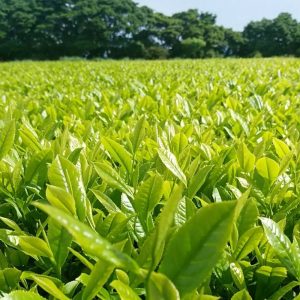
Benihikari, which literally means “red light”, is a Japanese tea cultivar for black tea.
Note that black tea is called “red tea” (koucha) in Japan.
This cultivar is a mixture of tea plants from three countries: China, India and Japan.
It’s relatively rare.
History of Benihikari
In 1952 at the Makurazaki Tea Research Station, Benikaori was crossed with Makura Cn1.
Benikaori is the hybrid of an Indian tea plant (Ai12), and one from Kagoshima prefecture called NkaO3.
Makura Cn1, meanwhile, is of Chinese origin.
The best seedling was selected, and it was tested in 1957.
In 1964 it was determined to be a high quality cultivar for black tea, and it was registered in 1969 as cultivar 28 under the agriculture and forestry list of cultivars.
When Benihikari started to be developed, Japan had the intention to export black tea.
However, due to competition from India, black tea production in Japan declined until the big majority of the production consisted of green tea.
So Benihikari and other black tea cultivars were abandoned.
Fortunately, they have recently been revived.
But the production of wakoucha is still very low.
Characteristics of Benihikari
Benihikari is a very late budding cultivar, it can be picked more then 10 days later than Yabukita.
It has a strong resistance to cold weather, and it offers a high yield.
This cultivar is strong against anthracnose and the gray blight, and has a medium resistance to the white peach scale.
While not suited for green tea (it has too much astringency), it can make a high quality black tea and even an oolong tea with a good aroma.
As a black tea it has a clear reddish liquor with an enjoyable, penetrating aroma that has both sweet and menthol notes.
It also offers a lighter astringency and bitterness compared to more common types of black tea.
